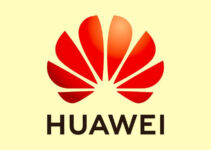Unilever PLC is a consumer goods manufacturing British Multinational Corporation. Unilever started its journey in 1929 as a result of a merger between British and Dutch companies. Today, we’ll discuss the Ansoff matrix of Unilever; the fourth growth matrix strategy analysis quadrants; market penetration, product and market development, and diversification strategy of consumer goods Companies as Ansoff matrix business example.
Elements of Market Penetration Strategy of Unilever
- Develops relevance with different cultures and traditions across the globe
- Established a worldwide retail and distribution network and they increase the final conversion
- Collaborates with various celebrities and influencers to amplify its market reach
- Creates emotionally charged advertisement commercials to connect with end customers
- Makes data-based decision with key analytical insights
Top Selling Markets and Geographical Regions of Unilever
- Europe
- USA
- UK
- Asia
- Middle East
- Africa
- North America
Latest and Best Collection Offer of Unilever
- 7th Generation cleaning supplies
- Magnum
- Vaseline
- Suave
- Ben & Jerry’s
- Axe
- Knorr
- Hellmann’s
- Lipton
- Dove
The Ansoff matrix of Unilever would analyze the four growth matrix strategy analysis quadrants; market penetration, market development, product development, and diversification strategy of the consumer goods manufacturing brand. Here’s the Unilever Ansoff matrix company example as follows;
Ansoff Matrix of Unilever
Let’s discuss the four growth matrix strategy analysis quadrants in the Ansoff matrix of Unilever as the Ansoff matrix company example; they’re as follows;
Market Penetration Strategy of Unilever
The market penetration growth strategy quadrant in the Unilever Ansoff matrix business example as growth matrix strategy has the lowest risk. It is because here the consumer goods brand sells its current products and services in the existing customer market. However, the consumer goods market is growing, and the market penetration growth strategy is possible.
I-Economies of Scale
Unilever is offering its consumer FMCG (fast-moving consumer goods) products to a very large customer market. The economies of scale help the company to achieve cost efficiency and transfer the cost benefit to the customers. However, it helps the company to further penetrate the market.
II-Large Customer Base
Unilever has established a very large customer base serving more than 3.4 billion customers daily with a wide range of consumer goods. The large customer base helps the company to penetrate the market through referrals and recommendations.
III-Diversified Portfolio
Unilever has a well-diversified product portfolio comprising of wide range of consumer goods; shampoo, soap, surf, coffee, kitchen items, pharmaceuticals, and many others. The vast portfolio helps the brand to target various segments of the customer market and approach the new ones with the existing product portfolio.
IV-Promotional Campaigns
Unilever launches various types of promotional campaigns to attract the attention of existing customer markets and promote the sale of existing products. They’re like coupons, gifts, deals, offers, and others to penetrate the existing market with the same product portfolio.
Market Development Strategy of Unilever
The market development growth strategy quadrant in the Unilever Ansoff matrix business example as the growth matrix strategy has a bit higher risk than the market penetration strategy. It is because here you expand your market and offer your existing food product portfolio in the new market. However, you don’t know the culture and response of the new market; that’s what makes it riskier.
I-Global Market
Unilever is already operating its business in more than 190 countries across the globe. The consumer goods manufacturing brand has been expanding its market by entering new regions and geographies across the world. While doing so, the brand increases its sales, market, and influence globally.
II-Subsidiary Brands
Unilever offers multiple products under different brand names in various regional markets. The consumer market influence of subsidiary brands has increased so much that they contribute billions of dollars to the company’s revenue and profitability. Some of the top-selling subsidiaries of Unilever are as follows;
- Lipton
- Rama
- Hellmann’s
- Heartbrand
- Knorr
- Magnum
- Rexona
- Axe
- Dove
- Omo
- Surf
- Sunsilk
- Lux
Product Development Strategy of Unilever
The product development growth strategy quadrant in the Unilever Ansoff matrix business example as the growth matrix strategy has higher risk than the market penetration strategy. It is because here you launch a new product service or consumer good in the existing customer market. You would have to run new marketing and promotional campaigns for the new product and it makes it riskier.
I-Innovative Products
Unilever has been expanding its portfolio with innovative and creative products ever since its foundation. It has allowed the company to introduce new innovative consumer products and goods to the customers. For instance, the consumer goods brand has over 20,000 patents for innovative product ideas.
II-Large Product Portfolio
Unilever offers hundreds and thousands of products and goods in over 400 brand names. It has only become possible through consistent product development and product innovation.
III-New Product Variants
According to an estimate, Unilever invested approximately 850 million Euros on research and development in 2022. It has allowed the company to launch new product variants and improve the existing products for the customers.
Diversification Strategy of Unilever
The diversification quadrant in the Unilever Ansoff matrix business example as growth matrix strategy is the most risk growth strategy than all three previous growth strategies. It is because here you launch a new food product or service in a new customer market. You won’t know how your new market will react to the new product or food items.
I-Horizontal Diversification
Unilever has been expanding its product portfolio and customer market over the years. It has allowed the company to earn a significant portion of the customer market and worldwide reputation. The company plans to do the same by launching new products and entering new markets across the globe.
Conclusion: Unilever Ansoff Matrix Example Company | Growth Matrix Strategy Analysis
After an in-depth study of the Ansoff matrix of Unilever; we have realized that Unilever is the world’s leading consumer goods manufacturing British company. If you are learning about the Unilever Ansoff matrix company example; then you should keep in mind the abovementioned four growth matrix strategy analysis quadrants; market development, market penetration, product development, and diversification strategy.

Ahsan is an accomplished researcher and has a deep insight in worldly life affairs. He goes Live 3 days a week on various social media platforms. Other than research writing, he’s a very interesting person.


